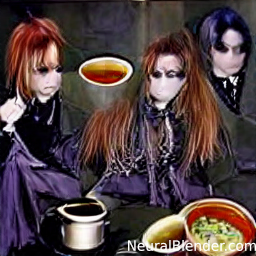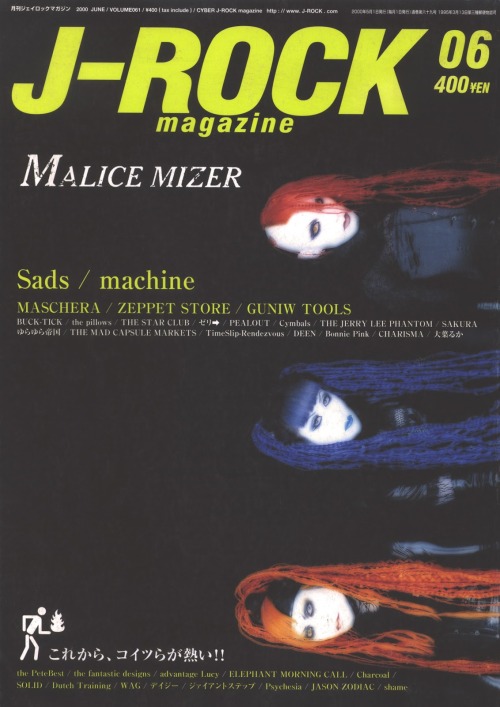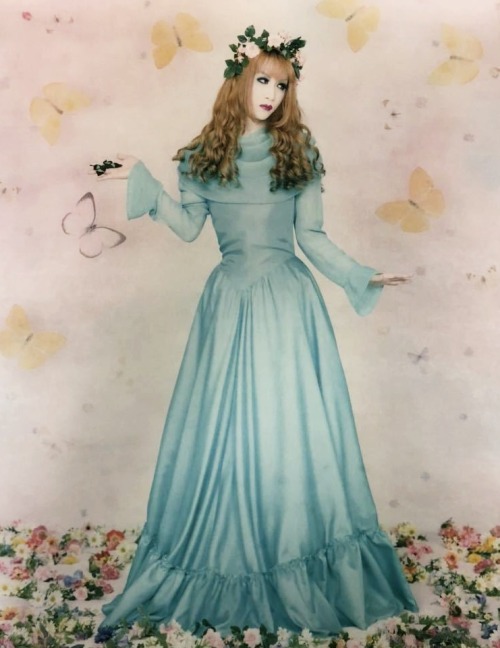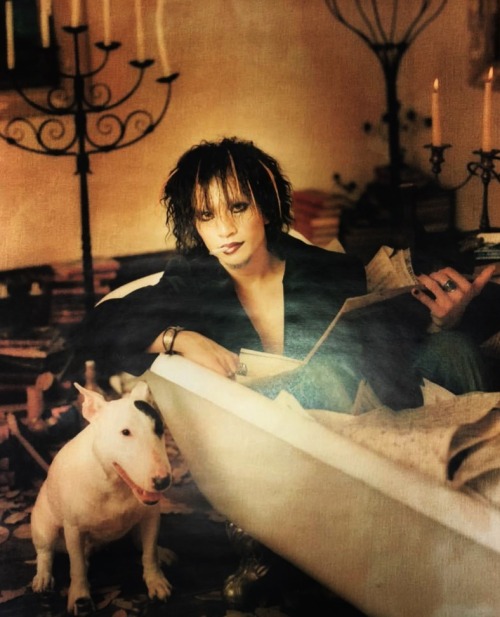
mansamacult
he/him, Multi fandom, 18
128 posts
Latest Posts by mansamacult






Miku? <3


茂みの中から出てきたクロちゃん。めちゃくちゃ警戒してます。大丈夫、怖くないよ。
A black cat came out of the bushes. he is very scared. Don’t worry. It’s all right.

まだ幼さが残るキジトラさん。大きな目、あどけない顔。一瞬で逃げてしまいました (T_T)
I found a cute cat with big eyes. But he went right away.




genshin needs a baseball episode










You didn’t do anything, Boss.




GACKT | Master Positions

(◡‿◡✿)
(ʘ‿ʘ✿) “what you say ‘bout me”
(ʘ‿ʘ)ノ✿ “hold my flower”
Pretend I added a panel where Star Platinum yeets Kakyoin into the void
(Click for higher quality)



Happy new year
New year new queer

out of curiosity i went to gackt’s instagram and now i feel like dying - anon
cursed image #542
Why.

Swiggity Swooty
Gackt and Mana from the good old days of Malice Mizer






malice mizer x
except for the one of gackt and kozi, these photos seem to be from a talk show malice mizer had been on, they are in the gekka no yasou kyouku costumes [feel free to share but credit is appreciated, also check the link for more]

Malice Mizer eating soup







malice mizer + magazine covers (cr.)
What Happened To Visual Kei?
This is for especially the younger fans who came to the fandoms late- the youngest Millennials and Gen Z especially.
We often hear statements online that Visual Kei is “dead”, but there’s not much solid discussion about what actually happened, and when.
First off, I’d like to distinguish between the foreign consumption of the music vs. its Japanese market counterparts. This focus is primarily on the foreign side, only touching lightly on the Japanese side of things. I also don’t distinguish between micro sub genres (i.e. Nagoya Kei).
In Japan, the 1990s are considered the golden era of Visual Kei, and it ended roughly with the death of hide from X JAPAN.
The musical genre at that time was in a state of both over saturation of bands, especially middling and small time artists, that were increasingly not very unique or particularly good (more interested in looking wild and getting laid than being artistic), and we experienced beginnings of the generational change of guards, heralding a much heavier style shift. There was a schism too, of lighter, not so dark branching off sub genre taking off in another direction such as Oshare Kei, which didn’t catch on quite so well.
For foreigners however, the music really didn’t start coming over in any significant quantities until that second generation. Much of this had to do with access to the Internet, the ability to upload files of any usable size without sitting for half a day with a single song, and the advent of YouTube. Napster wasn’t really much of a resource for foreigners- you have to know something existed to go look for it. There was no exposure unless you had a friend on the inside, living in Japan, or with connections to people in Japan.
Anime and Manga hit boom years with Millennials in the 2000s, with soundtracks of mostly Anisong, but occasionally getting Visual Kei theme songs. Of course, Yaoi manga became huge too, which created a hunger for MxM flirtation amongst readers who got that itch scratched with the clips of Visual Kei they found on YouTube, as well as many of these consumers nursing the inherent desire for something different than the western music industry offered, and the genre took off. I consider that decade the golden era of Visual Kei in the foreign market.
So what happened?
It was a double pronged event: the pursuit of piracy by the music industry and movie industry, and bands adamantly divorcing themselves from the image and reputation of Visual Kei. Several of the bigger bands/artists changed their grooming and clothing style, and adamantly swore they were no longer Visual Kei.
RIAJ, the Japanese recording industry, got some pretty scary anti piracy laws passed, as well as labels introducing anti scalping measures.
I consider that the golden era of foreign Visual Kei fandom ended in January 2012, with the government crackdowns on illegal file sharing taking out MegaUpload.
File hosting services, notably MegaUpload simultaneously got nuked… and that’s where the fans were storing all their video footage and album rips. LiveJournal, the primary core location of Visual Kei fandoms of the west, became a ghost town overnight as downloadable content dried up.
This, along with the crackdown on fan scanlations of manga (especially Yaoi), and fansubbed anime, drastically cut into the exposure and access to the subcultures and music overseas. Japanese labels were harsh online, yanking down fan YouTube, DailyMotion, etc. uploads, and refusing to create official channels to continue to keep the artists from vanishing from visibility. Those rare ones that were on YouTube had useless short untranslated artist talk clips, and zero music. Post January 2012 began a dark period for the future of Visual Kei outside of Japan.
Foreign fans became blamed for the bulk of piracy, and the recording industry took measures to eliminate it.
As labels started to relent to fans demanding official YouTube artist presence, they distrusted foreign fans so much, they put Japan-only regional blocks on the paltry 15 second ad spots for new releases, essentially cutting the western world off, with the exception of actual tangible sales… but that too happened off an on for a few years, until about 2016- there were a few outrages where selective retailers refused to allow foreigners to either see retail listings via regional blocks, refused to fulfill preorders, or banned purchases outside of Japan. Music to a great extent wasn’t available for purchase digitally either, and old school record labels tried to force consumers to purchase tangible discs, not trusting digital sales or the then fledgling legit streaming services.
The “we’re not Visual Kei!” image shift that bands/artists began- which thankfully ultimately proved to be temporary- robbed the visual pop and even shifted the genre sound style significantly for some artists (such as BUCK-TICK), hit many foreign fans hard, and with everything else, there wasn’t much left for us. Why were bands doing it? Pressure from the entertainment industry and Japanese public focused on the shoddy indie bands that had nothing to offer but makeup, costumes, and a bunch of dudes with little interest in the music and performance quality… just wanting to get laid and paid easy money. That reputation persists to this day within the indies.
Foreign fans had already been fighting the intense homophobic abuse of people outside of Japan who found Visual Kei a great target, and the fandoms internally were increasingly becoming hostile and toxic too. Many fans jumped on the artist bandwagon to shun any acknowledgement that Visual Kei still existed, and went after any fans speaking in their blogs or in groups and forums that so-and-so band was Visual Kei. Stalking, attacks, hacking, threats from generally toxic and questionable “fans”- all became pretty common within the fandoms, shattering them in safety concerns and the joy being robbed of it all. (It’s still happening too… it used to be a safer place) Most of the previous generation gave up and stopped listening to the music; many went into hiding, some quit and to save face claimed that it was just a phase and they grew up, others walked away because it just wasn’t as juicy as it had been, not really into the music, but had been there for what we called the pr0ns. (pr0ns is early webspeak for “porn”. Content filtering on freedom of speech was pretty intense back then, and typing the word “porn” could get your posts blocked by hosting services or your account banned, so special code words were developed to avoid filters).
There are very few of us left, of the active Generation X early foreign Visual Kei fans.
The biggest differences I see between the generations is the willingness and desire to explore and seek out new artists/bands is low compared to the earlier generation. Fans are greatly tunnel visioned, sticking to the older, safely established mega bands/artists and are more concerned about ‘shipping. This hurts the smaller bands that try to break out- they go ignored regardless of their talent. The small ones get attention primarily from sexy photos passed around if a band member is particularly attractive. Some artists are outright “canceled” too, not getting a chance because the herd says they refuse to listen to them and loathe them… though they really don’t know why, because it’s legacy “cancellation” and not their own… because of the sheer strength of peer pressure and fear within the fandoms.
Thankfully there’s much less of a focus with the current, younger generation on emulating drinking and smoking habits of the bands. It was an intense peer pressure thing for the previous generation of fans to start drinking your favorite artist’s booze of choice and explore their favorite cigarette brands as listed on band member bio profiles. Speaking up about it in the fandom would get you backhanded and ostracized.
Older generation often focused on the music first, then looked closer at the band members as their fandom developed, and “cancellation” wasn’t a trendy thing yet. Voracious explorations of new bands was deeply encouraged in the previous generation, fans taking on an almost evangelical role sharing their band finds to their friends and anyone they met. We didn’t have toxic and ridiculing homophobic, xenophobic memed out reaction videos peppering YouTube. It increased over time, but the homophobic racist anti Visual Kei sentiment wasn’t as much of a thing yet.
I think that we’re at another turning point right now, the successful established hit bands/artists are getting older, signaling the necessity of another generational shift, but not many fans are looking for the emerging hopefuls. Listeners are inhabiting a world of post “it used to be the cool shit”, but isn’t anymore. Visual Kei has firmly returned to the absolute fringes. Japan has finally made the music globally available, accessible, so barriers are down.
Korean idol pop has moved into the wake, the vacuum left behind Visual Kei, because it doesn’t trigger homophobia as much, and it’s booming because parents aren’t as threatened by their teens consuming it- it appears to be much more wholesome. Yeah, sorry KPop fans, that’s the truth. KPop is mother approved, like Annette Funicello and her Skippy peanut butter. It’s the “good part of town” compared to publicly hard drinking (and sometimes drugging) back alley punk thuggish Japanese Visual Kei.
It’ll be interesting to see what happens over the next few years.






MALICE MIZER
1998 OFFICIEL CALENDRIER

another drawing of mana









BRO, THIS IS BIZARRE! 🤯

Me
Oh.

Rare image of Joseph joestar with baby Holly <3
Damn he's huge.





